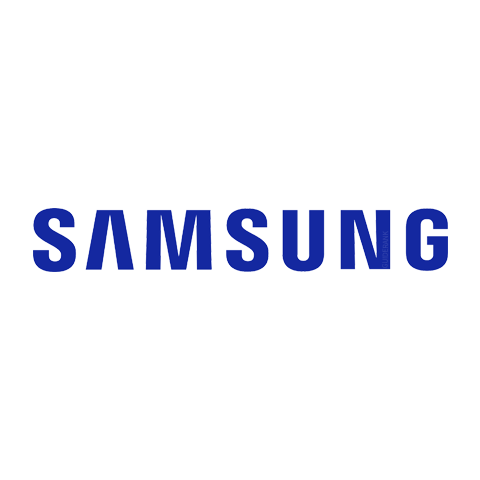Samsung's S series and Note series have always been sold at the same time in the form of dual flagships, but there is always a certain difference in the direction of the two, the S10 is more like a flagship phone used by ordinary consumers, while the Note series comes with a bit of business atmosphere, and due to the existence of the S Pen, it can meet certain productivity needs.
Note 10 is the first time to launch two sizes of models, divided into standard version and Plus version, the hardware difference between the two is much larger than the S10 series, although it was launched at the same time, but the Plus version supports the 5G network of NSA networking, and the standard version only supports 4G; Although they are all Dynamic AMOLED screens, the Plus version has a 1440P screen, while the standard version is only 1080P, and the resolution is not as good as the S10 standard version; The Plus version will have a TOF lens, while the standard version will not. In terms of running memory, the Plus version is more like a flagship's 12GB, while the standard version is a relatively mediocre 8GB.
Dual speakers, horizontal linear motors, wireless charging and Wi-Fi6 are available, but the 3.5mm headphone jack is missing, but Samsung also comes with AKG headphones with Type-C interface in the accessories, which makes up for this regret.
In terms of appearance, the Note 10 series still continues to have a more square silhouette, which is very recognizable, but the layout of the camera module behind it is relatively ordinary, just a simple vertical row of three cameras in the upper left corner, which is not as special as the S10 horizontal row of three cameras. All the physical buttons have been moved to the left side of the body, which is different from ordinary mobile phones, and it takes a habit process. In addition to the more regular McQueen Black and Miss White, there is also a very special Monet color. Monet's color scheme will refract many colors at different angles, which can be said to be colorful or bells and whistles, and only at certain angles will it show a single light blue. The craftsmanship of this color scheme is absolutely exquisite and complex, and as for whether you like it or not, it is up to you to decide whether you like it or not.
Samsung's Dynamic OLED screen has already performed very well on the S10 series, and it is natural to use it on the Note 10 this time. The Note 10+ uses a large 6.8-inch screen, so even with the same resolution as the S10+, 3040×1440,498 PPI is a bit lower than the S10+'s 522. With HDR 10+ certification and a peak brightness of 1200 nits, the display delivers content clearly in bright outdoor light while maintaining excellent color accuracy. According to Display Mate's tests, this screen supports 113% DCI-P3 color gamut, and the color accuracy in the P3 color gamut is 0.4JNCD, which is better than the 0.8JNCD of Apple XS Max. S10 also supports HDR 10+ video playback, but it is not recommended to watch videos for a long time in low-brightness scenes, because this screen still uses PWM low-frequency dimming, only more than 90% is DC dimming, and the refresh rate is still 60Hz.
The quality of this screen is excellent, and it's a pity that it lacks DC dimming and doesn't have a high refresh rate. Compared to the pill-shaped hole in the upper right corner of the S10+, the Note 10+'s small round hole in the middle has greatly weakened the sense of presence, and it has become a mainstream solution for flagship phones in 2020.
Because the screen uses a small arc edge,This screen-to-body ratio will be much stronger both digitally and visually,It's just that the arc edge is small,After all, it's still a curved screen,Samsung has improved the problem of mistouch from S10,Note 10+It's not too obvious,But it can't be completely avoided。 The Note 10's finger ultrasonic recognition is a bit faster than the S10's, but the unlocking animation still slows down the unlocking speed in terms of sensory effects.
In terms of performance, the Samsung Note 10 National Edition is not equipped with Snapdragon 855+, but continues to use 855, but 855+ is nothing more than an overclocking version, and 855 has not opened a particularly big gap, Note 10 has not caught up, and the impact on performance is not so big. Like the S10 series, the Note 10 series will use the Exynos 9825 in some overseas markets, such as the Korean version, but the GPU is Mali-G76 MP12, which seriously delays the performance of the SoC. On the one hand, the SoC performance lags behind the Snapdragon 855, and on the other hand, it cannot be brushed by the national bank system, and can only be unlocked and brushed to a third party, which is far less convenient than the national bank.
The S Pen is responsible for meeting some of the productivity needs of the Note series. This generation of S Pen supports air gestures, which can be used to do things that require a touch screen by shaking and shaking, but this feature does not work as we expected. When we're holding the machine, the amount of movement of the air gesture is significantly greater than the double tap on the screen, which is really a bit of a frustration. S Pen at this time is more used to complete some operations that fingers can't accurately point, such as writing and drawing, but the 6.8-inch screen area is also limited, and the operation is not as free as on the iPad Pro, and it is a bit chicken.
If the phone is not in hand, the role of the S Pen is more obvious, because it is connected through Bluetooth, it can be controlled from a distance, and you can fix the phone somewhere when taking a group photo, and press the shutter remotely. Another interesting feature of the S Pen is that it can be used with a TOF lens to draw three-dimensional graphics in the air, which is not a productivity tool, but it is quite special.
In terms of photography, the Samsung Note 10+ 5G achieves the highest score for the DxO Mark, with a Photo score of 118, just behind Huawei's P30 Pro. Exposure is consistent and precise across all lighting conditions, with a very wide dynamic range and well-preserved detail in both highlights and shadows.
Unlike the P30 Pro, the Note10+ not only performs well in DxO Mark's experimental conditions, but also in real-world shots. One of the obvious features of Samsung's flagship camera is that it is as natural as possible while being comfortable for the eyes. It's true that it's not as good as the Huawei P30 Pro and Reno on the telephoto end, but it does the best in terms of hardware support. If you're looking for photos and videos, then the Note 10+ will definitely satisfy you.
In terms of charging range, the Note 10+ is equipped with a large 4300mAh battery, probably because of the external 5G baseband, the battery life is slightly behind the OnePlus 7 and P30 Pro in the flagship phone, but there will be no battery life anxiety. Samsung this time for the Note 10+ standard 25W charger, measured to be fully charged in 64 minutes, there is also a 45W charger available for purchase, 56 minutes can be fully charged, not that 45W is not fast enough, but 25W is fast enough, 45W charger is not an accessory that must be upgraded.



